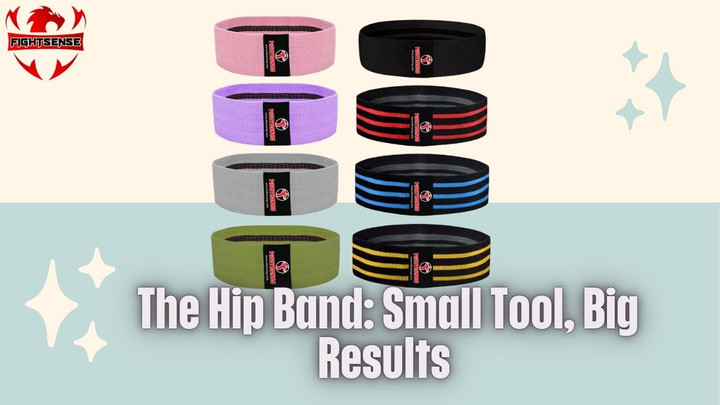The Hip Band: Small Tool, Big Results
11th Apr 2025
You have most likely seen a little looped band around someone's thighs if you have ever perused workout videos or rehab advice—yep, that is the hip band. Though it looks basic, this small instrument is revolutionizing mobility work, injury healing, and strength training.
The hip band might become your new best friend whether you're practicing for performance or you're controlling hip band syndrome.
Keynotes
- Activates glutes and improves hip strength.
- Helps prevent and manage IT band syndrome.
- Enhances form during squats and lunges.
- Delivers big results from a small tool.
- Great for home workouts and rehab.
What Exactly Is the Hip Band?
Usually little above the knees, the hip band is a thick, cloth resistance band worn around the thighs. Perfect for targeted glute and hip activation, it provides a strong grip and continuous tension unlike rubber bands that might roll or snap.
It's frequently used:
- During power exercises
- Regarding glute activation
- undergoing physical therapy for disorders including hip iliotibial band syndrome
- To advance lunge and squat techniques
It clearly yields higher strength, improved form, and less danger of injury.
Benefits of Using the Hip Band
Athletes, personal trainers, and rehab experts like the hip band for the following reasons:
1. Increases glute activation
Particularly if you spend lengthy hours seated, glutes are sometimes underactive. Adding hip band tension guarantees they participate completely in your routines.
2. Lowers the injury risk
Especially useful for preventing or controlling hip iliotibial band syndrome, a frequent overuse ailment affecting cyclists, runners, and even office workers, improves form and posture.
3. Enhances Form and Posture
Particularly in squats, lunges, and leg presses, it keeps you in correct posture. That better form guards your knees and hips.
How to Use the Hip Band Effectively
If you are fresh to this, start with a smaller resistance level and progressively raise. Throughout lateral band walks, use from the hip band.
- Bridges of Glute Development
- Squats and clam shells
Those healing from hip band-related overuse or trying to prevent flare-ups of iliotibial band syndrome of the hip can particularly benefit from these exercises.
Choosing the Right Hip Band
Remember these things while looking for the correct good:
- Seek for non-slip cloth bands.
- Select from several resistance levels
- Guarantee comfort and longevity
Whether you are beginning strength training or rehabbing iliotibial band syndrome of the hip, Fightsense.com provides professionally crafted hip bands for all fitness levels. Moreover, the hip band's outcomes make every stride worth it.
Final Thoughts
One little instrument with great impact is the hip band. It belongs in everyone's fitness repertoire from lowering injury risk to enhancing performance and mobility.
Whether your goals are improving posture, developing glute strength, or healing from the hip band-related discomfort, regular use helps to support long-term outcomes.
Particularly if you have hip issues like iliotibial band syndrome, never undervalue the strength of this basic instrument.
Note: This material is meant for informational only use; it is not meant to be medical advice. Before beginning any new fitness program, always see a skilled healthcare practitioner, particularly if you are struggling with hip issues including iliotibial band syndrome.
Quick FAQs
- What’s it for?
Hip strength, Glute activation, and injury avoidance.
- Treats IT band discomfort?
Indeed, excellent for control of hip iliotibial band syndrome.
- How often should one use it?
2–4 times weekly, as prescribed.
- Where should I put it?
Just above the knees—or ankles, depending on the action.
- Perfect for novices?
Indeed, start light and progressively build!

